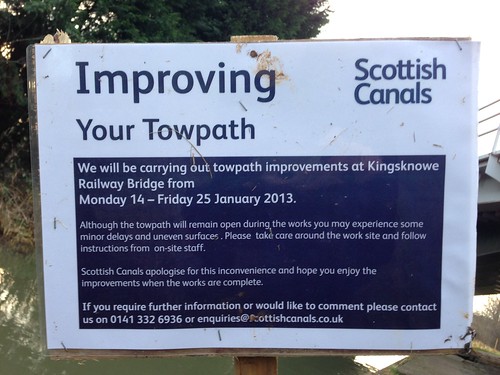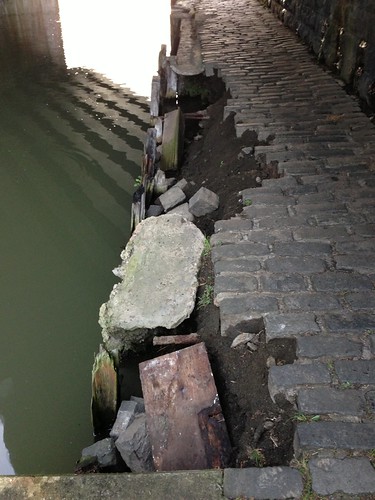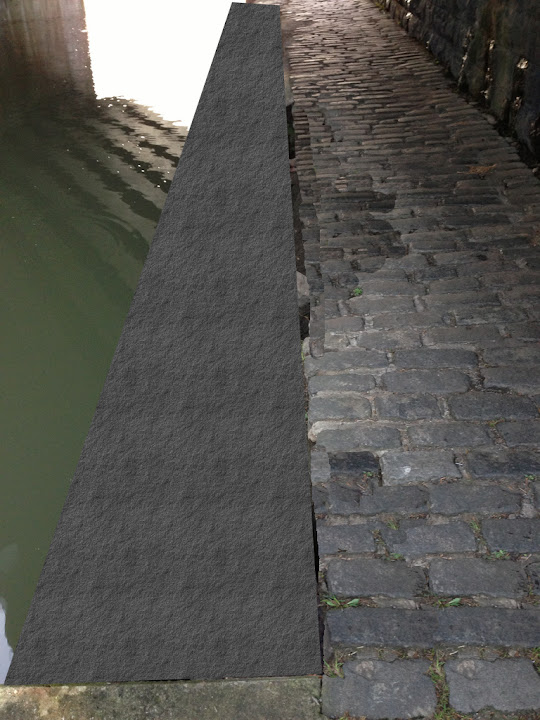As a temporary measure at Kingsnowe I'd suggest that if there is sufficient width to passage of boats to continue, they use a couple of their mooring pontoons connected and parallel to the towpath, set up to divert traffic around the section to be repaired.
The timber piling and boards that retain the ground behind (supporting the towpath surface) have clearly failed, and the modern solution is generally to use interlocking steel piles driven down, cut off to the required level, backfilled with stone or concrete and capped - for a 'heritage' look probably with stone blocks on a concrete screed below. For a balance between 'look' and safety I'd suggest that the new surface is laid in flush finish flat top blocks, laid with a tight bond (none of the modern standard of rubbish with open joints and brushed in weak mix) and set on a puddle clay bed.
Without the protection of the boards, the wash of every passing boat leaches out more material and accelerates collapse, potentially affecting the support for the bridge arch (lightening the loading of material surrounding the foundations), and seriously of concern to those maintaining the structure if the deterioration continues. Presumably if this is a railway bridge, Network Rail will be aware of the canal bank collapse underneath it. Is the bridge numbered as a canal or a rail bridge on any bridge plate?





 posts
posts
